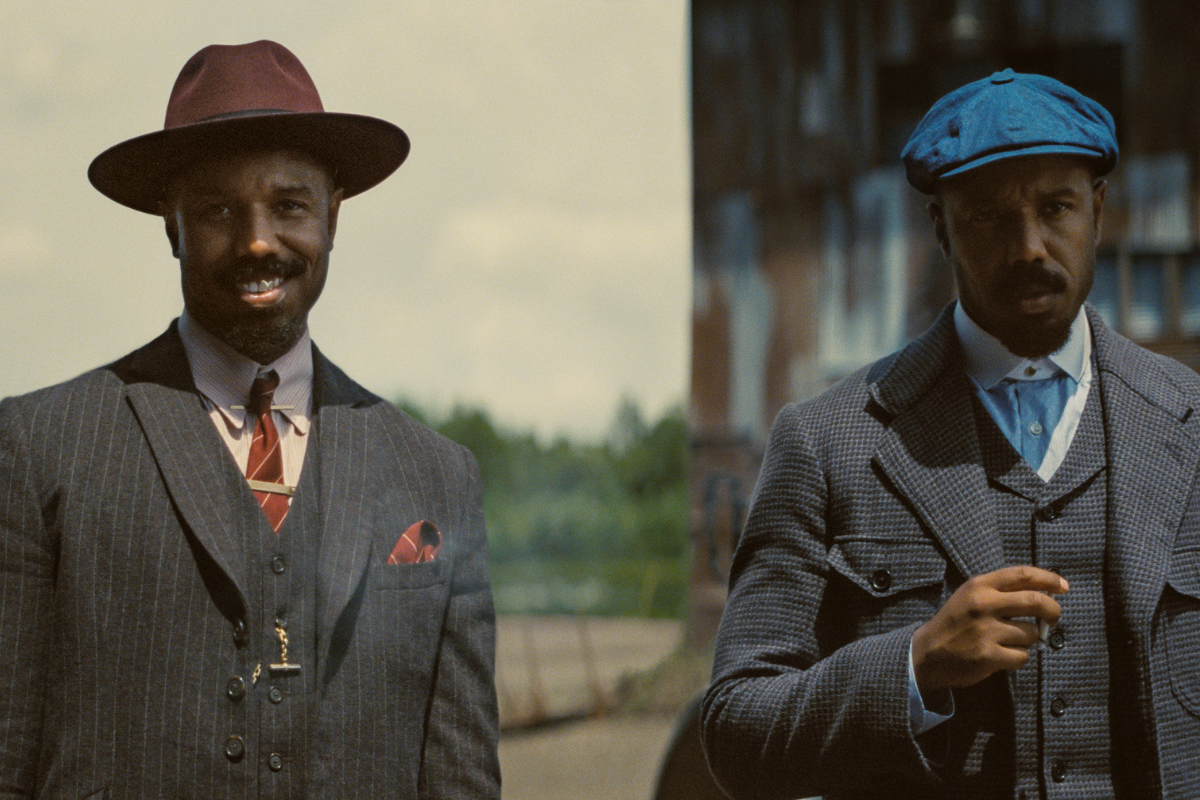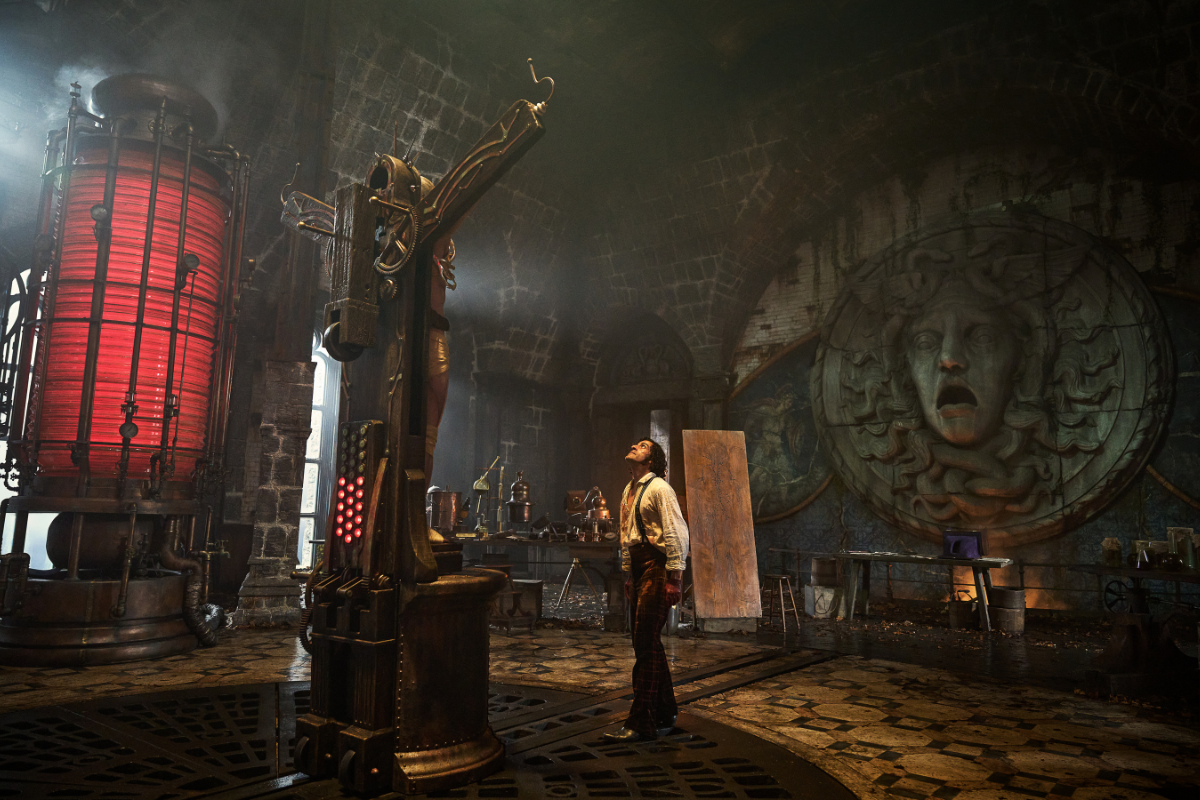SCRIPT SECRETS: ‘Barbarian’ – Change Up!
How do you keep your screenplay unpredictable? We look at 2022’s ‘Barbarian’ for the answers… and a technique I call the “Change Up!” – a major plot twist that completely changes everything in the story.
Every year there are big expensive tentpole films that are expected to sell a lot of tickets, and serious independent films that are expected to get nominated for a lot of awards... and those small to medium-sized genre films that are expected to do OK business and make a little money and keep people going to the cinema so that the tentpoles and serious films will have an audience. But every so often one of those small to medium-sized genre films breaks out, makes a lot more money than anyone expected, and the VPs of Development at a bunch of production companies are saying, “Bring me the next BARBARIAN!”
One of the things we can learn from Barbarian and movies like Plane (2023) and Missing (2022) is a technique I call the “Change Up!” - a big plot twist that changes everything and keeps the story from being predictable. That’s not a film term... I’m just using it to describe complete changes in story direction in these three films, and what I think might be the reason for their success.
In my Secrets Of Action Screenwriting book, I use the (also unofficial) term “Rug Pull” for a twist that is so shocking that you aren’t sure how the story can continue (protagonist Marion in Psycho being murdered - sorry, spoiler!) and this is similar. But instead of a major plot twist, these seem to change what the plot actually is.
In Barbarian there was a sudden change in story, and I wondered if they had gotten the film reels mixed up...except they don’t project film anymore. We suddenly cut from our lead character in a spooky Airbnb in Detroit encountering something in the basement... to an actor in Hollywood who is being fired and sued for sexually abusing an actress. Wait? What? What does one have to do with the other?
This leads us to the most important element of using a “Change Up” in your story... no matter how big the change is, it’s still the same story. The big twist must make complete sense and be part of the story. In this case, that actor in Hollywood is the owner of the Airbnb house and flees his legal problems in Hollywood to hide out in his rental house in Detroit. We don’t know that when we get the big change, but that information is soon given to us.
In Plane we think that the story is going to take place on the plane - a typical disaster movie story. But then the plane lands on an island...and the story is now about the island...and then we find out who or what else is living on the island... and the story is about that... and then... Each of these changes is still the story of the Airline Pilot and his crew having to protect the passengers from a series of escalating problems which are all connected. We just don’t see the connections at first because we believe it’s a disaster movie.
Missing seems to begin as a rowdy comedy - 18-year-old June’s mother is going away on vacation with her new boyfriend and the moment she gets the “No parties!” order, June starts planning a wild party.
Our first change-up is when June manages to clean up most of the evidence of the party minutes before she has to pick up her mom at the airport... and her mom is a no-show. Mom has vanished in Cartagena, Columbia... and now June must use the internet and an old guy in Columbia who does odd jobs for online clients (kind of an Uber Eats guy on a moped) to find her mother. But every time we think we know what happened, everything changes! The whole story changes. The genre might change. But by the end of the story, all of the different pieces fit neatly together. These only seem like different pieces at first, because we can’t see the whole picture.
One of the things I frequently say is that before a story can “unfold”, a writer needs to fold it. These radical changes to the story exist because instead of telling the audience everything at the beginning (the jerk actor in Hollywood is the owner of the Airbnb house with that thing in the basement) the information is withheld and revealed later as a way to keep the story unpredictable. New information is revealed that changes everything that the audience assumed.
One of the things about “folding” a story is to remember that just because the writer didn’t give the audience all of the information in the beginning doesn’t mean that information hasn’t always been true. A plot twist isn’t creating new information, it’s merely revealing information that has always been true. By the time the audience has assembled all of the pieces in Missing, they discover that everyone in the story is not who they seem to be and things that we thought were true were deceptions - characters lying and the audience believed those lies! But those characters knew they were lying and knew who they really were and what their motivations had been all along. Viewers can hit the rewind button or watch the film again and see if that character acted consistently with the truth while they were telling those lies.
The writer needs to have “folded” those twists into the story so that the relationship between Norman Bates and his Mother is obvious once you have been given the information in the twist ending. That relationship was always there, it just wasn’t revealed until the ending.
Let’s look at Barbarian in a moment and then the other two examples over the next two weeks to demonstrate how these "Change Ups" work. Do I need to warn you that there will be a million spoilers? All of the secrets are about to be revealed and these radical changes in the story will be exposed as a storytelling technique designed to keep the audience guessing.
BARBARIAN (2022)
Written and directed by Zach Cregger
Budget: $4.5 million
USA Theatrical Gross: $40.8 million
DETROIT: On a dark and stormy night Tess (Georgina Campbell) pulls up to the Airbnb in a desolate part of the city where she is staying for a job interview in the morning. The neighborhood is run down, the house isn’t great looking, but it’s only for one night. The lock box is open, the key isn’t there... and someone is in the house. The door is opened by Keith (Bill Skarsgård) who also booked the house for that night. Double booked. Keith offers to sleep on the sofa and Tess can use the bedroom (which has a locking door). This is a creepy situation - sharing a creepy house with a strange man. We think that this is going to be the story... and Tess makes sure to take a picture of Keith’s driver's license with her phone, just in case.
In the middle of the night, Tess wakes up... and the locked bedroom door is now wide open! But Keith is asleep on the sofa and says he didn’t open the door. Then who did?
The great thing about this is that we have no idea if he’s lying or not - he could be the threat.
The next morning the rain has stopped and Tess goes to her job interview, then returns to the house... and is chased by a crazy homeless man. She locks herself inside the house. Safe? Keith is not there, he has gone out and will return later. Tess goes down to the basement to do laundry... and the door locks behind her. She is trapped in the basement. She can’t climb out the basement window but finds a door leading into a dark hallway. A way out? She walks down the dark hall... finding a room at the end with a bed, an old camcorder, and a blood splatter and a bloody handprint on the wall. Not safe! She runs out of the hallway and closes the door behind her.
Keith returns and rescues her from the basement. She tells him about the hallway, and he decides to investigate... After he doesn’t return for a while, Tess goes into the hallway to investigate. The camcorder/bloody room is empty... but there’s an entrance to a dark scary tunnel... and something is in the tunnel coming towards her! Keith, who is injured and scared. Before Tess can help him, *something* in the tunnel attacks both of them! Killing Keith and grabbing Tess!
CHANGE UP!
This story is in four distinctive parts, and part one with the double-booked Airbnb with the creepy hallway and tunnel in the basement has enough scares for a whole movie! But we get a sudden cut from the darkness of the creepy tunnel in Detroit to...
HOLLYWOOD, a bright sunny day, actor AJ Gilbride (Justin Long) is in his convertible tooling around town when his phone rings. His agent - it seems that an actress has accused him of sexual assault, is it true? Gilbride is a complete jerk, and wants to fight the allegations... but he’s been fired from his TV show and the actress has gone to the police. Gilbride’s career is probably over, and he’s going to lose everything... including his freedom. Where can he hide from the police, reporters, and everyone else?
Well, he owns some rental properties as investments, including one that he’s renting out through Airbnb in a bad part of Detroit...
The great thing about this "Change Up" is that when the story cuts from that dark tunnel to bright Hollywood, we initially are confused... what does one have to do with the other? It’s like we are in a completely different movie. Then, when the investment property becomes the perfect place for Gilbride to hide? Oh... this is all part of the same story! Now we have a scenario similar to Detective Arbogast in Psycho investigating the disappearance of Marion Crane and going up to the house behind the motel to ask Mrs. Bates a few questions. We know that Gilbride will go to his house in Detroit and probably become our next victim... and he’s such a jerk that we might be OK with that. But what if he can rescue Tess?
Gilbride also needs money for legal fees - maybe he can sell the house? So when he arrives he isn’t just shutting off his phone and hiding from everyone, he is inspecting the house to sell it. He’s so self-centered that Tess and Keith’s belongings in the house don’t raise any red flags. When he discovers the door in the basement leading to the room with the camera and blood splatters on the wall? Extra square footage! Maybe he can make more money off the house than he thought! He begins measuring the hallway and bloody room and the dark and spooky tunnel... and is attacked by the creature in the tunnel! Gilbride is tossed into a pit the creature uses as a prison, where his cellmate is... Tess.
All of the pieces seem to be coming together, when...
CHANGE UP!
IN THE PAST (it seems to be the 1960s): Frank (Richard Brake), a “prepper” type, is buying supplies for his bomb shelter at the hardware store. All of the typical things that you would need to survive World War 3 underground... plus some items that you might need if you also planned on kidnapping a woman to stay with you. Creepy!
Frank begins kidnaping women, taking them to the rooms at the end of the dark hallway under his house, and the other rooms at the end of the tunnel... and if his victims get pregnant and give birth to female offspring? Waits until they get old enough and rape them as well. And if they have female offspring?
Once again, even though this is horrific, you wonder what it has to do with the previous two parts of the story... except Frank lives in the pretty, new version of that run-down house. Back when it was it nice suburban neighborhood in Detroit. Frank built the underground hallway and tunnels and all of those underground rooms. And that creature? The result of multiple cases of inbreeding - this is a human woman! Sick! Disgusting! Gross! Now we know what the creature is and how it came to be, so we...
CHANGE UP!
THE PIT: Back to Gilbride and Tess in the pit... where she tells him that the Creature thinks that they are its children and is keeping them safe from the outside world.
Though each of these "Change Ups" seem like completely different stories, each is a piece of the “puzzle” of one story, and after our initial confusion, the new piece makes complete sense. It’s never a bunch of unrelated parts, never a grab bag of stories being forced together, never just some crazy twist to keep things interesting... each is a logical part of one story.
The parts might not seem to be connected at first, but if you were to look at a handful of jigsaw puzzle pieces they might not seem to be part of the same picture. These aren’t random pieces that get connected later, these have always been pieces of the big picture... but we didn’t know what that picture was until we reached the end. The writer never has to force two pieces to fit together - they have always fit together. The story is told in a way that seems to be constantly changing and evolving so that we have no idea where it’s going... except it’s always heading in the same direction. When we get a new piece of the puzzle... IT FITS!
Remember that homeless guy in the first section of the story? He returns in this last section of the story and everything he did in that first section that was scary and creepy? Makes complete sense once we know who he is. Another puzzle piece that fits perfectly.
Nothing in this story is throwing random ideas against the wall to see what sticks. It’s not a serial killer and zombies and supernatural stuff and demons and whatever else might be scary shoehorned into the same messy disconnected story... it’s always one thing. We just don’t know what that is until it is revealed piece by piece throughout the film like a puzzle.
The "Change Ups" keep twisting the story by giving us new information in an unusual way... but all of this information is connected. That creature that lives in the tunnels under the house never changes, but our understanding of the creature does. In both Plane and Missing our understanding of the characters changes as new information is introduced. By telling the story in a way that seems to constantly be changing what the story is keeps the audience guessing and keeps the story exciting and unpredictable.
Change up!
In this 10-week course, we’ll take you through some of the master filmmakers and writers of the past—Alfred Hitchcock, William Goldman, George Lucas, Edgar Wright, Steven Spielberg, and more—and give you a peek behind the curtain of their work and how they crafted stories.
William C. Martell has written 20 produced films for cable and video, including three HBO World Premieres, a pair of Showtime films, the thriller Hard Evidence (Warner Bros.), and the family film Invisible Mom. He wrote an original horror script for a popular streaming service that was released October of 2023. He is the author of The Secrets of Action Screenwriting. Follow William on Twitter: @wcmartell.







